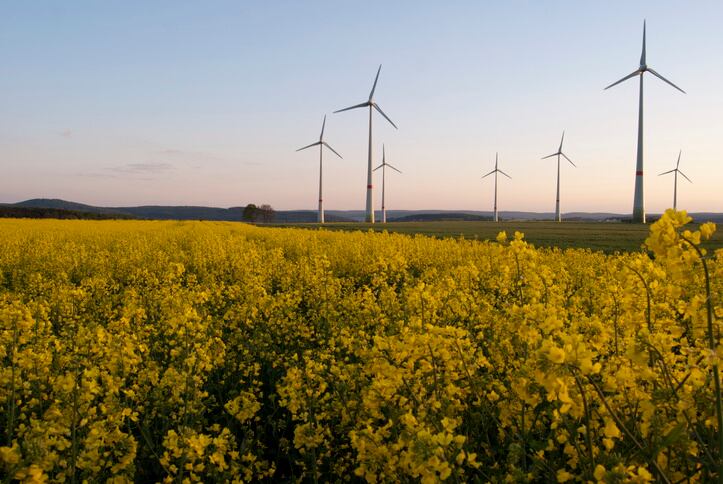Currently, approximately 62% of our electricity comes from burning fossil fuels. Electricity used in industry accounts for a whopping 24.2% of total greenhouse gas emissions - compared to 18% generated across agriculture, forestry and land-use.
Within the food sector, moving to renewable energy is a key step for many companies as they work to reduce carbon emissions originating within their own operations.
Recent years have seen the likes of PepsiCo and Kellogg commit to switching their factories to renewable sources. When Nestlé unveiled its 2050 net zero ambition in 2019, we were told that renewable energy would be a major driver for its internal efforts.
Speaking to us at the time, Head of Operations Magdi Batato explained Nestlé believes that buying from renewable suppliers is the best way to maximise its impact because it sends a signal to the market and enables suppliers to invest in new infrastructure such as wind and solar farms.
“The main focus is [in buying] renewables to push investments for windfarms and solar. It is a bit like plastic development – it allows renewable energy suppliers to show the business case. We are still starting that journey. We can’t do it alone," he said.
Mars is another multinational that has thrown its weight behind renewable energy. This has completely altered how the company approaches energy contracts, Kevin Rabinovitch, VP Global Sustainability, told us.
“We used to buy electricity more or less on an annual basis, and we would buy it from a utility company who was distributing electricity. We had no idea where that electricity was being produced. They were buying it from somewhere and they were supplying it to us and everything was fine.
“Now in our renewable energy deals, we often sign 15- or 20-year contracts. Not only with a utility provider but a company that's generating power. And not only just a company that generating power, but a specific asset. We’re now buying power for 15 years from the Moy Wind Farm outside of Inverness in Scotland. We've gone like completely the other end of the spectrum.”
James Lewis, Director of International Cleantech at energy and automation solutions company Schneider Electric, explained that this is one of four main tools available to companies who want to buy green energy. These consist of offsite power purchase agreements, onsite power purchase agreements, Energy Attribute Certificates (EACs) and utility green power programs.
“Many organisations today are still unable to purchase renewable energy directly from their energy utility provider. Instead, they must rely on onsite or offsite renewable energy, usually in the form of solar or wind projects. The clean power is commissioned through a power purchase agreement (PPA), which funds the construction of new renewable energy sources. PPAs are typically in place for 10-15 years to ensure that the power grid benefits from long-term renewable energy generation. The largest, most progressive organisations have been deploying onsite and offsite renewable energy for many years already and are now beginning to address renewable energy adoption within their supply chain,” Lewis explained.
A company’s approach to clean energy will depend on its scale and the resources available to it, he continued, with barriers remaining for smaller businesses who want to support the green energy transition. Collaboration can be leveraged to overcome this.
“For small-to-medium sized businesses, economies of scale have made it difficult to purchase renewable energy in the form of PPAs. However, as renewable energy has become more affordable and larger organisations look to reduce the carbon emission from their supply chain, the most progressive organizations have deployed aggregate PPA programs that allow smaller organisations to 'club' together to purchase renewable energy,” Lewis observed.
And with green energy continuing to rise up the agenda, the energy expert only expects this trend to gather steam.
“Global corporate PPA adoption has been on the rise for over a decade, corresponding to an increase in overall renewable energy generation and an acceleration in the decommissioning of coal power plants. Initially, the use of PPAs was driven primarily by technology giants like Google, Apple, and Facebook, but it is now being rapidly adopted by most large organisations as their stakeholders demand climate action.
“Over the last 12 months, there has been a substantial increase in customers, employees, and investors calling for organisations to tackle climate change. This has led to more organisations making decarbonisation and renewable energy procurement commitments.”




